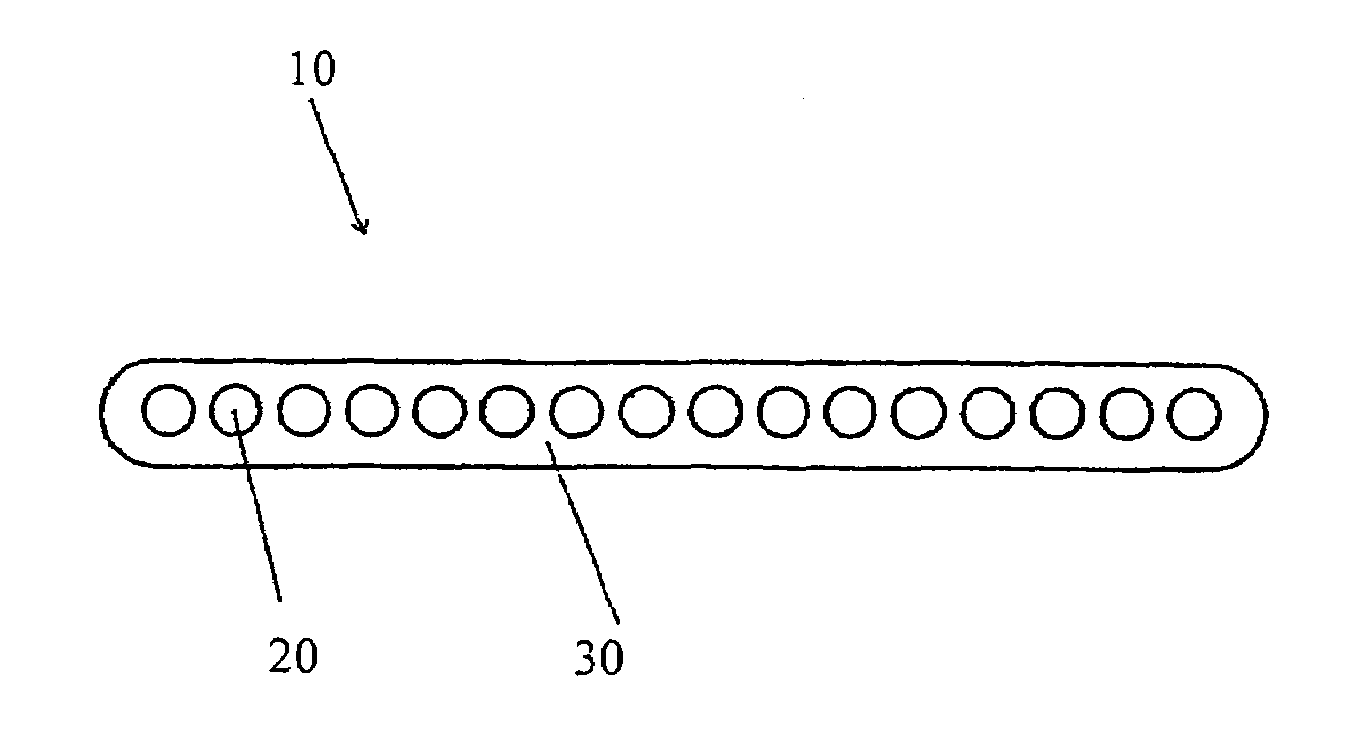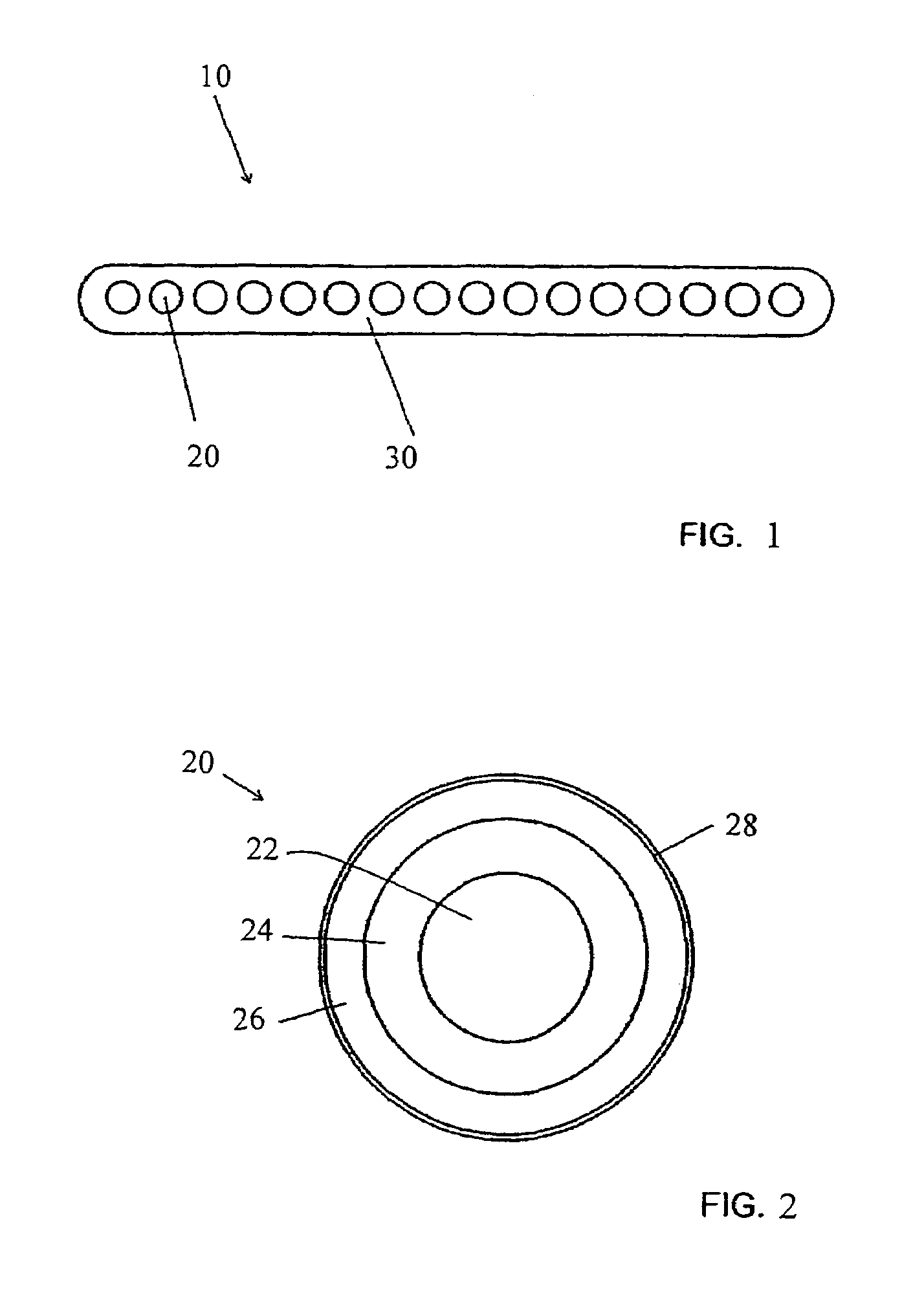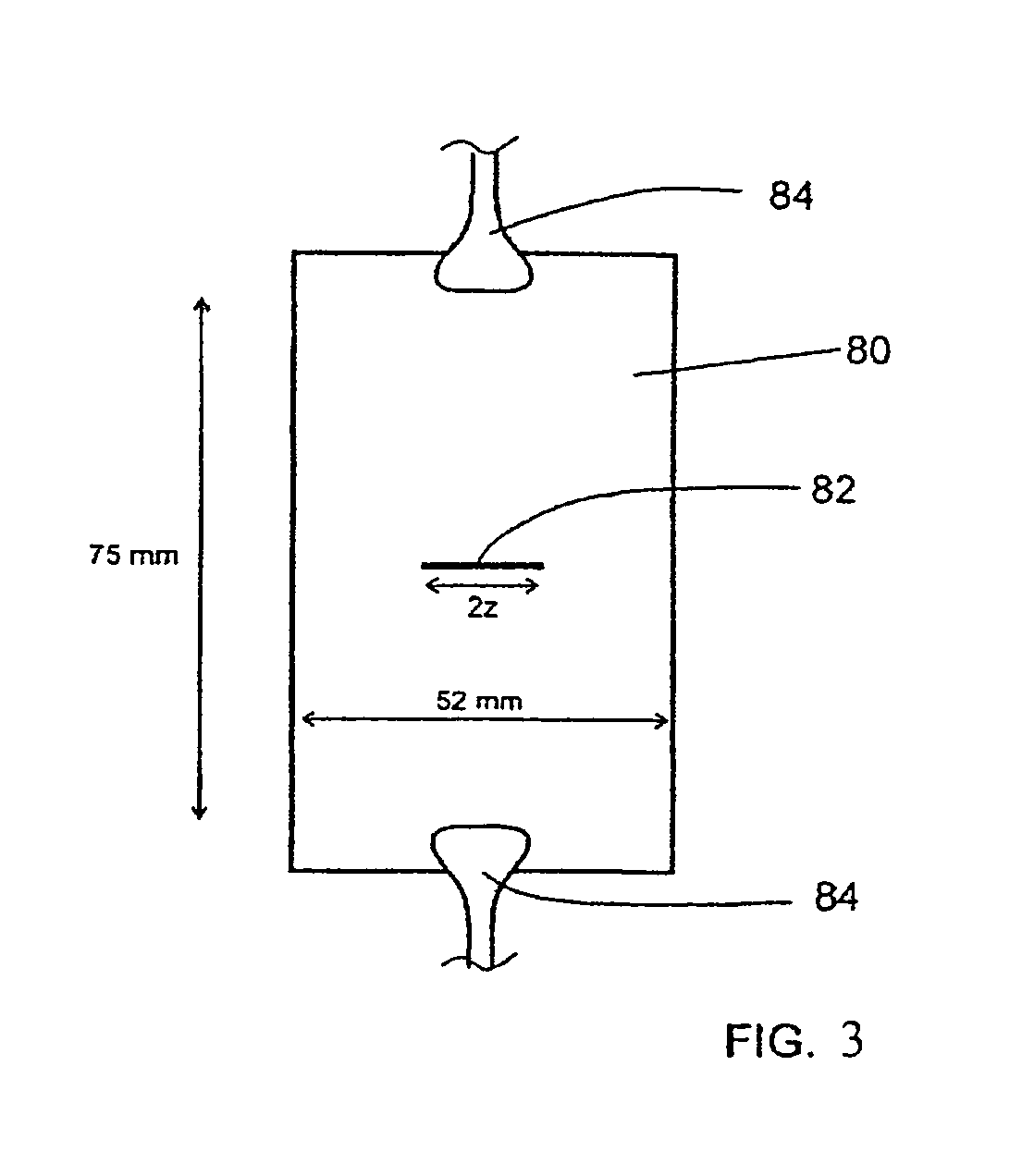Optical fiber ribbon with improved stripability
a technology of optical fiber and stripability, applied in the direction of optical waveguide light guide, fiber mechanical structure, instruments, etc., can solve the problems of poor peeling performance of the ribbon, difficulty in obtaining a fast cure speed, and increased surface friction
- Summary
- Abstract
- Description
- Claims
- Application Information
AI Technical Summary
Benefits of technology
Problems solved by technology
Method used
Image
Examples
example 1
on of Optical Fiber Ribbons
[0092]Optical fiber ribbons were fabricated using previously prepared optical fibers that possessed either a high Tg (>60C) secondary coating (“Coating A”) or a lower Tg (<55C) secondary coating (“Coating B”).
[0093]Ink compositions that were used to cover the optical fibers included either DSM-LTS (“Ink A”), an ink coating commercially available from DSM Desotech, Inc. (Elgin, Ill.); a base composition containing 20% Photomer 3016 (Cognis), 77% Photomer 4028 (Cognis), 1.5% Lucirin TPO (BASF), 1.5% Irgacure 184, and 0.5 pph Irganox 1035 (“Ink B”) or a base composition containing 10% KWS4131 (Bomar), 5% Photomer 3016 (Cognis), 82% Photomer 4028 (Cognis), 1.5% Lucirin TPO (BASF), 1.5% Irgacure 184 (Ciba) and 0.5 pph Irganox 1035(Ciba) (“Ink C”)
[0094]Dual matrix systems included both an inner matrix and an outer matrix.
[0095]Inner matrix materials included either DSM 950-716, a urethane acrylate based matrix material commercially available from DSM Desotech, I...
example 2
f Ribbons for Strip Cleanliness
[0099]All ribbons were stripped using a Sumitomo JR4A stripper set at 90° C., the purpose of which was to simulate worst case conditions that may be found in the field. Stripping was performed by hand, at either subjectively defined slow or fast rates. Ribbon strip performance was evaluated with ratings assigned for both cleanliness and tube-off.
[0100]Strip cleanliness was measured by examining the stripped optical fiber for debris. As described above, a score of one (1) identifies a fiber having a low amount of debris on its surface and a score of five (5) represents a fiber having a significant amount of debris on its surface. Any score of three (3) or less was deemed to be acceptable strip cleanliness. Cleanliness measurements were obtained by visually inspecting a segment of the stripped ribbon fibers with the naked eye. Particles remaining on the stripped ribbon fibers were examined and compared to limit samples which were rated according to the f...
example 3
n of Marking Ink Degree of Cure
[0104]Ink formulations were prepared using one or more of the following components: Photomer 3016, a high viscosity epoxy acrylate monomer (Cognis); Photomer 4028, an ethoxylated (4 moles) BPA diacrylate monomer (Cognis); V-Cap / RC, n-vinyl caprolactam monomer from ISP Corporation; Lucirin TPO, 2,4,6-trimethylbenzoyl-diphenyl phosphine oxide (BASF); Irgacure 184, a hydroxy-cyclohexyl phenyl ketone (Ciba); Uvitex OB, a 2,5-thiophenediylbis(5-tert-butyl-1,3-benzoxazole) optical brightener (Ciba); Irganox 1035, a thiodiethylene bis {3-(3,5-di-tert-butyl-4-hydroxyphenyl)propionate} (Ciba); and TegoRad 2250, a silicone polyether acrylate slip agent (Tego Chemie / Goldschmidt Chemical Corp., Hopewell, Va.).
The above base formulation was combined with the appropriate pigments to prepare violet, red, white, blue, brown, and black inks.
In addition, Cablelite 751 ink formulations obtained from DSM Desotech were compared side-by-side to the above inks.
[0105]The vari...
PUM
| Property | Measurement | Unit |
|---|---|---|
| Tg | aaaaa | aaaaa |
| Tg | aaaaa | aaaaa |
| glass transition temperatures | aaaaa | aaaaa |
Abstract
Description
Claims
Application Information
 Login to View More
Login to View More - R&D
- Intellectual Property
- Life Sciences
- Materials
- Tech Scout
- Unparalleled Data Quality
- Higher Quality Content
- 60% Fewer Hallucinations
Browse by: Latest US Patents, China's latest patents, Technical Efficacy Thesaurus, Application Domain, Technology Topic, Popular Technical Reports.
© 2025 PatSnap. All rights reserved.Legal|Privacy policy|Modern Slavery Act Transparency Statement|Sitemap|About US| Contact US: help@patsnap.com



